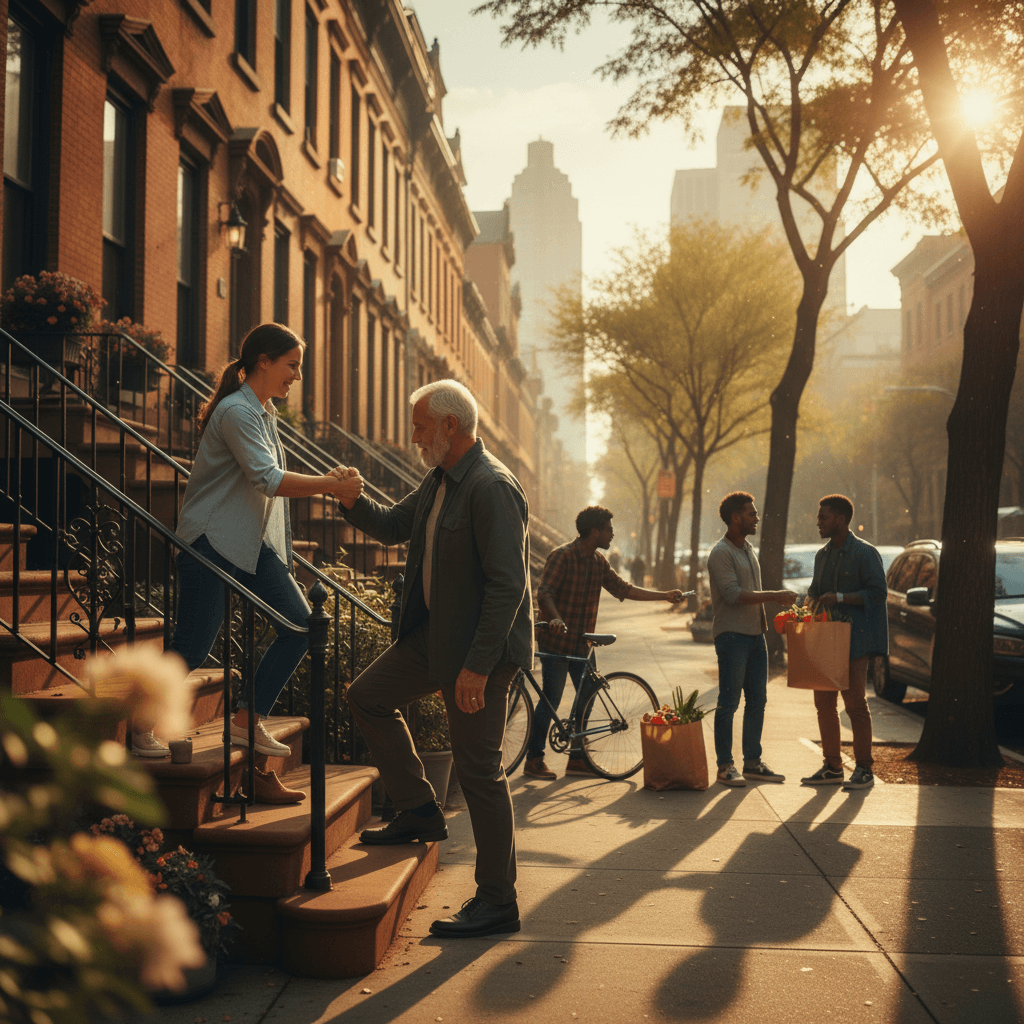How One Neighbor Elevates an Entire Neighborhood

Lift one neighbor and you lift the neighborhood — Frederick Douglass
The Spark of Communal Momentum
At its heart, the saying compresses a social law: visible help to one person resets what a community considers possible. Because neighbors watch one another, a single success can become a story others borrow. The result is not merely charity but a shift in norms—trust builds, reciprocity thickens, and small acts begin to coordinate themselves. Moreover, this momentum often begins where institutions feel distant. A driveway cleared for an elder becomes two porches repaired, then a block clean-up that coaxes city services to return. In this way, lifting one neighbor plants a flag of care, and that flag becomes a rallying point.
Douglass’s Ethic of Mutual Elevation
Although the wording is modern, the principle mirrors Frederick Douglass’s ethic of mutual uplift. In Self-Made Men (1872), he argued that personal striving carries public obligations: the self-made person is indebted to society and must help others climb. His press, The North Star (1847), worked by connecting isolated readers into a cause; information turned dispersed sympathizers into a political neighborhood. Thus, Douglass’s life shows how assisting one individual—teaching literacy, aiding escape, mentoring—was never isolated. Each act fed an abolitionist network whose strength grew with every person empowered (Narrative of the Life of Frederick Douglass, 1845).
Networks and the Physics of Uplift
Extending this insight, network science explains why one lifted neighbor can lift many. Mark Granovetter’s “The Strength of Weak Ties” (1973) showed that opportunity often travels through casual connections—exactly the links that stitch blocks into neighborhoods. Help that expands a person’s ties multiplies job leads, health information, and civic invitations. Complementing this, Robert Sampson’s Great American City (2012) documented “collective efficacy”: when residents trust and help each other, neighborhoods reduce violence and improve outcomes. Therefore, aiding even one neighbor increases the visible stock of trust, nudging others to participate and reinforcing the web that carries benefits.
Historical Proofs of Neighborly Power
History bears this out through concrete experiments in uplift. Jane Addams’s Hull House in Chicago began with classes and childcare for local families; within a few years, the surrounding ward saw improved sanitation, labor organizing, and civic advocacy that outgrew the house itself (Addams, Twenty Years at Hull-House, 1910). Similarly, the Rosenwald schools partnership with Black communities did more than educate individual children; by training teachers, hosting meetings, and anchoring pride, it lifted surrounding counties, with later research linking the schools to higher literacy and adult earnings for cohorts served (e.g., Aaronson and Mazumder, 2011).
Modern Evidence of Spillovers
Contemporary research clarifies the mechanisms. The Moving to Opportunity studies and follow-ups show that when children grow up in higher-opportunity neighborhoods, their adult earnings and college attendance rise—benefits that radiate through siblings and peers (Chetty, Hendren, and Katz, 2016). More recently, the Opportunity Atlas and work on “economic connectedness” find that cross-class friendships strongly predict upward mobility, even controlling for income; in other words, one neighbor’s bridge to different networks can elevate many (Chetty et al., Nature, 2022). These findings quantify Douglass’s intuition in modern terms.
From Kindness to Capacity
Consequently, practical uplift starts small but designs for spread. Mentoring one teen, sharing tools on a block, or co-hosting a résumé night for immediate neighbors creates stories, skills, and ties that others can join. As momentum grows, modest institutions—little free libraries, mutual-aid chats, porch concerts—become platforms for trust. To scale this ethic, policies should underwrite the places and people who broker ties: libraries, parks, broadband, community health workers, and credible messengers who mediate conflicts (Butts et al., 2015). With such scaffolding, lifting one neighbor becomes not an isolated kindness but a repeatable, neighborhood-wide habit.